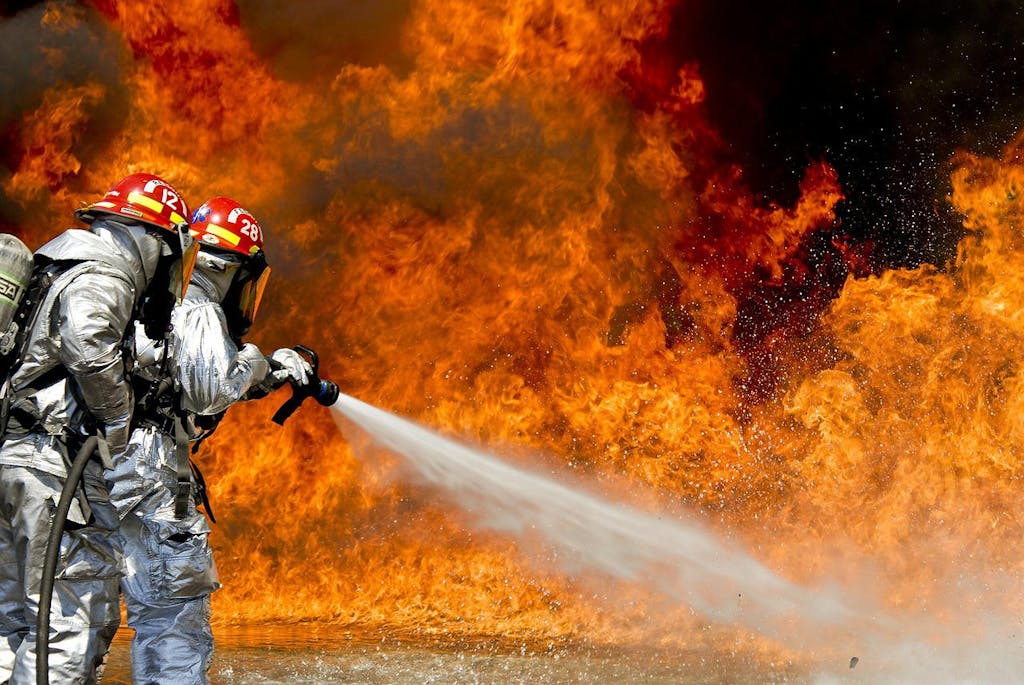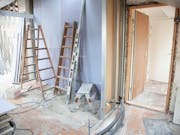Fire safety is a skill we’ve been taught since we were young, and for good reason. According to data from the U.S. Fire Administration:
- Almost 1.3 million fires were recorded in 2019.
- 3,704 deaths were recorded from fires, a 25% increase since 2010.
- $14.8 billion in damages were recorded, a whopping 75% increase from 2010.
It’s clear that fire safety is still a lesson we need to learn, and workplaces need to be especially diligent to ensure the wellbeing of their employees. In order to conduct a proper safety inspection, you first have to know where the fire hazards are in a typical work environment.
- Identifying the Top Fire Hazards In the Workplace
- Industries with Unique Fire Safety Needs
- How To Ensure Fire Safety At Work
- Identify and Address Fire Hazards
- Give Special Attention To High-Risk Areas
- Maintain Fire Suppression and Response Systems
- Keep Passageways Clear
- Get Everyone On Board with the Plan
- Take a Proactive Approach To Workplace Safety
Identifying the Top Fire Hazards In the Workplace
Fires are a lot more complicated than most people think. There are many types, and they can arise in all sorts of situations. Companies dealing with potentially risky operations and materials need to think twice about their fire safety protocols.
Examples of potential fire hazards in the workplace include, but are certainly not limited to:
- Flammable materials: A lot of materials in a typical office can add fuel to any fire, such as paper, cardboard, and boxes. The best way to safeguard against fire hazards in the workplace in this regard is to stay organized and avoid clutter. Discard any flammable trash in a safe manner regularly.
- High-risk materials: Businesses that work with certain combustible liquids and vapors need to be extra careful. For high-risk items, follow proper storage protocols, such as storing liquids in well-maintained containers and in cool, dry environments. Be sure to clean up any spills promptly.
- Smoking: Always ask employees to smoke outdoors or in designated smoking zones with proper bins to extinguish and dispose of burning cigarettes.
- Dust and debris: Even small particles in the air and on the ground can pose a potential fire safety hazard in the workplace. Be sure your ventilation system is working properly and operating around the clock during work hours. Air purifiers and filters also help in removing dust from the air.
- Electrical accidents: From overusing a power socket to using defective cables, fires are unfortunately common during electrical accidents at the office. In the same vein, unplug any appliances when they’re not in use and ensure no flammable materials come into contact with them.
Even if your business isn’t a workshop and doesn’t deal with flammable materials on a daily basis, don’t think that you’re immune to common fire hazards in the workplace. Make the right preparations and keep your company safe.

Industries with Unique Fire Safety Needs
Fire safety should be a high priority for all companies. Certain industries, however, have a considerable amount of risk that must be mitigated.
For instance, industries like construction and metal working use a lot of large machinery that generates plenty of heat during operation. Cutting and welding tools might generate heat and even sparks. Paints and sprays are known to be combustible liquids. And don’t forget specialized electrical equipment like junction boxes, circuit breakers, and transformers.
How To Ensure Fire Safety At Work
Don’t leave your business at risk. Start designing a fire prevention program today to address fire hazards before they become costly and potentially deadly problems.
Identify and Address Fire Hazards
Refer to our list of common fire hazards in workplaces above, and keep a watchful eye out for new hazards that you might discover later.
- Avoid using damaged electrical equipment and do not overload power outlets.
- Store flammable materials properly, such as in a cabinet.
- High-risk items like flammable liquids need their own storage solutions.
- Properly dispose of trash and recyclables that could pose a fire hazard.
Get other staff members in on the effort too to cover all your bases. Once hazards are reported as quickly as they are spotted, you greatly reduce your chance of suffering a workplace fire.
Give Special Attention To High-Risk Areas
Even if you don’t work with heavy machinery or hot cutting tools, offices still have a few “hot spots” for potential fires. Examples you might find in a typical office include:
- The break room or kitchen, which usually contain electrical appliances like toasters and coffee makers.
- Server rooms and computer labs with plenty of electrical wires and plugs.
- Janitor rooms where cleaning chemicals and materials are kept. Some can be flammable or corrosive, for instance.
Focus your efforts on these types of rooms, but don’t neglect other places in the business while you’re at it.

Maintain Fire Suppression and Response Systems
From smoke detectors to fire extinguishers to wall-mounted firefighter hoses, ensure that every fire detection and suppression system in the building is maintained and working at all times. Regular checkups and testing are necessary in this regard.
Fire extinguishers are a well-known example of equipment that needs your attention.
- Regular inspections to make sure all of them are charged and ready for use.
- Employee training so that anybody in the office is able to use one during a fire.
- Cleanup to remove any obstructions and ensure that all extinguishers are accessible.
It’s a combination of the right tools, the right preparations, and the right staff training that will truly protect you from fire hazards and cut down on incidents.
Keep Passageways Clear
In the event of an actual fire, you want to make sure employees can leave through designated emergency exits unrestricted. Likewise, firefighters need to be able to enter the building without issue.
Keep emergency exits clear of debris, equipment, or any other blockages. Ensure that emergency exit signs are in place and properly lit up. You want to make sure visibility, accessibility, and movement are all possible in the event of a real fire.
Get Everyone On Board with the Plan
You may have noticed that a lot of our tips have to do with getting your employees on board with your plan. Training staff members on safety protocols matters. The cause of many office fires is ultimately human error and negligence, so getting employees on board with fire safety is a big step in the right direction.
Part of that job is hosting regular fire evacuation drills. Host these drills regularly and design them according to legal fire safety requirements.

Take a Proactive Approach To Workplace Safety
Fires aren’t the only safety hazard in the workplace. It can seem daunting to cover all potential safety hazards at the same time, but auditing your processes to achieve high safety standards is much easier when you have thorough inspection software at your side.
monitorQA offers mobile inspection software that makes safety compliance flexible and easy. It works by allowing businesses to:
- Conduct safety inspections and audits more efficiently
- Standardize the inspection and audit process
- Build awareness of safety hazards in the workplace
- Offer a framework to implement corrective actions
- Have awareness of how well safety protocols are working
- Allow for collaboration to make safety a team effort
Our inspection software makes safety a measurable, quantifiable thing that’s easy to track and understand. Want to start taking a proactive approach to fire safety today? Start your free trial today!



